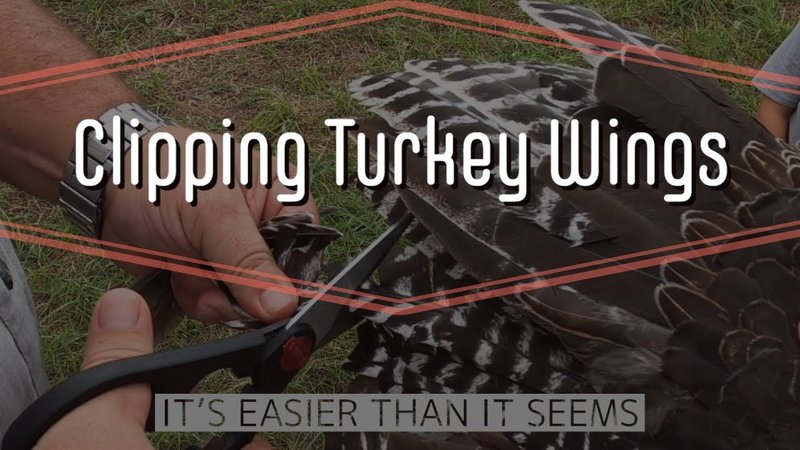
Let me explain. Domestic turkeys, largely bred for size and meat, often have a harder time taking to the skies compared to their wild counterparts. This is where wing clipping comes into play. If you’re a turkey owner or just curious about these fascinating birds, knowing how to manage their wings is crucial for their safety and your peace of mind. So, grab a coffee, and let’s dive deeper into the world of turkeys and their flying habits.
Can Turkeys Really Fly?
Wild turkeys are surprisingly good flyers. They can soar up to 200 feet in the air and reach speeds of 55 miles per hour! Isn’t that amazing? They use their flying skills mainly to escape predators or to roost safely in trees at night. Picture a turkey taking off in a burst of feathers, flapping its strong wings to get away from danger. It’s a sight to see!
Now, on the other hand, domestic turkeys are a different story. These birds have been bred for their size and meat production, which makes them heavier and less agile. As a result, they tend to be clumsier when it comes to flight. Most domestic turkeys can manage short flights or flaps but generally stay grounded. If you’ve ever seen a turkey try to hop over a small fence, you know exactly what I mean!
So, if you’re raising turkeys, understanding their flying abilities can help you create a more secure environment for them. Knowing whether they can fly—or how much they can fly—affects everything from their coop design to their overall safety.
Why Wing Clipping Might Be Necessary
You might be wondering why you would need to clip a turkey’s wings. Well, there are a few good reasons. First off, if your turkeys are roaming free in your yard, they may be at risk of flying into traffic or escaping your property. A quick wing clipping can prevent them from making those risky flights.
Here’s the thing: wing clipping is not cruel if done properly. It can actually help manage your turkeys better and keep them safe. Imagine letting your dogs run free in the backyard but then realizing they could easily dart into the street. Wing clipping can provide a similar kind of safety.
Additionally, if you’re raising turkeys for meat, restricting their flight can help them gain weight more effectively. When they’re less mobile, more energy goes into growing rather than flying around. So, keeping your turkeys grounded can be beneficial for both their health and your farm’s productivity.
How to Clip a Turkey’s Wings Safely
If you decide that wing clipping is the right choice for your turkeys, it’s essential to do it carefully. Here’s a step-by-step guide to help you out:
- Gather Your Supplies: You’ll need sharp scissors or poultry shears, a helper (if possible), and a calm environment.
- Choose the Right Time: It’s best to clip during the day when your turkeys are calm. Avoid the breeding season or during molting.
- Hold the Turkey Securely: Gently hold your turkey in your lap or have someone support it. Make sure it feels safe and secure.
- Identify the Wing Feathers: Look at the turkey’s wing and identify the primary flight feathers. These are the long feathers that help them fly.
- Clip the Feathers: Using your scissors, carefully trim about one-third of the primary flight feathers on one wing. This will impair their ability to fly while still allowing them to balance and maneuver.
Remember, never clip both wings; that can make it tough for them to balance. Only clipping one wing will keep them grounded while still giving them a fighting chance if they ever need to escape from danger.
How Often Should You Clip Their Wings?
After clipping your turkeys’ wings, you might be curious about how often this needs to be done. Generally, you’ll want to check on their feathers every few months. Turkeys grow new feathers as they molt, which can restore their flying abilities. Depending on the breed and individual growth rates, you may find you need to clip wings two to three times a year.
So, keep an eye on your turkeys. If you notice them starting to flap and perch more often, it might be time to give those wings another trim.
Alternative Management Tips for Turkeys
While wing clipping is one approach to managing your turkeys, there are other ways to keep them safe and content. Here are some strategies you might consider:
- Secure Fencing: Building a secure, tall fence around your turkey area can keep them safe from predators and prevent flying away. A 6-foot fence can work wonders!
- Create a Covered Run: If you have space, setting up a covered run allows your turkeys to roam freely without worrying about their ability to fly away.
- Provide Enrichment: Keeping your turkeys entertained can reduce their desire to escape. Provide them with toys, logs, or scratching areas to explore.
By using a combination of these methods, you can better manage your flock while allowing them to live healthy, fulfilling lives.
Understanding Turkey Behavior
Knowing how turkeys behave is another crucial part of managing them well. Turkeys are social creatures; they thrive in flocks and can get lonely if isolated. If you’re keeping just one turkey, consider adding a couple more to ensure they have companionship.
It’s also interesting to note that turkeys can recognize each other and even form hierarchies within their groups. You might see them establishing pecking orders, which is completely normal. Honestly, keeping a close eye on their interactions can help you address any bullying or issues as they arise.
Additionally, make sure your turkeys are getting along well. If you introduce new birds into the flock, do it gradually to avoid stress or aggression. Just like people, turkeys have their quirks, and understanding their behavior can lead to a happier flock.
So, do turkeys fly? The answer is both yes and no, depending on whether you’re looking at their wild or domestic relatives. Understanding their flying habits and how to clip wings can significantly impact how you manage your turkeys. With a bit of effort and knowledge, you can create a safe and inviting environment for these fascinating birds.
As you embark on your turkey-keeping journey, keep these tips in mind. Whether it’s learning to clip wings safely or understanding their social dynamics, you’re now better equipped to raise happy, healthy turkeys. Take it one step at a time, and soon you’ll find it’s all part of the rewarding experience of being a turkey owner.

